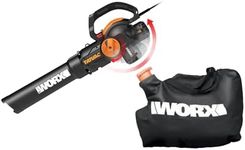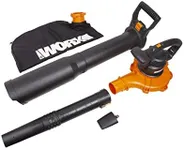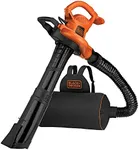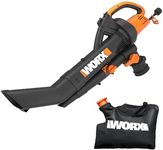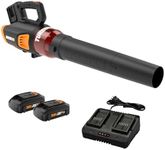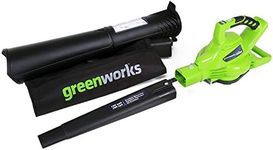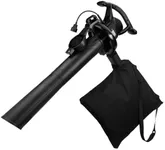Buying Guide for the Best Leaf Vacuums
Choosing the right leaf vacuum can make yard cleanup much easier and more efficient. The best fit for you depends on the size of your outdoor space, the type of debris you need to clear, and how much effort you want to put into the job. Understanding the key features and specifications will help you find a model that matches your needs and makes your yard work less of a chore.Power SourceLeaf vacuums can be powered by electricity (corded), batteries (cordless), or gasoline. The power source affects how long you can use the vacuum, how much maintenance it needs, and how portable it is. Corded models are great for small to medium yards with easy access to power outlets, as they offer continuous operation but are limited by the cord length. Cordless models provide more freedom to move around but are limited by battery life, making them suitable for small to medium areas. Gas-powered vacuums are the most powerful and best for large yards or heavy-duty jobs, but they are heavier, noisier, and require more maintenance. Consider the size of your yard and how much mobility you need when choosing the power source.
Airflow (CFM and MPH)Airflow is measured in cubic feet per minute (CFM) and miles per hour (MPH). CFM tells you how much air the vacuum moves, while MPH tells you how fast the air is moving. Higher CFM means the vacuum can pick up more leaves and debris at once, while higher MPH helps lift heavier or wet debris. For light yard work, lower CFM and MPH may be enough, but for larger areas or tougher debris, look for higher values. If you have a lot of wet leaves or larger debris, prioritize higher CFM and MPH ratings.
Mulching RatioThe mulching ratio indicates how much the vacuum can reduce the volume of leaves and debris. For example, a 10:1 ratio means the vacuum can turn ten bags of leaves into one bag of mulch. A higher mulching ratio is useful if you want to minimize the number of bags you need to dispose of or if you plan to use the mulch in your garden. If you have a lot of leaves and want to save space or create mulch, look for a higher mulching ratio.
Bag CapacityBag capacity refers to how much debris the vacuum can hold before you need to empty it. Larger bags mean you can work longer without stopping, but they can also be heavier and more cumbersome to carry. Smaller bags are lighter and easier to handle but require more frequent emptying. If you have a large yard or lots of leaves, a bigger bag will save you time, but if you prefer lighter equipment or have a small area, a smaller bag may be more comfortable.
Weight and ErgonomicsThe weight and design of the leaf vacuum affect how easy it is to use, especially for longer periods. Lighter models are easier to carry and maneuver, making them ideal for smaller jobs or users who prefer less strain. Heavier models may offer more power but can be tiring to use. Look for features like padded handles, shoulder straps, or wheels to make operation more comfortable. Consider your physical strength and how long you plan to use the vacuum at a time when evaluating weight and ergonomics.
Noise LevelLeaf vacuums can be noisy, especially gas-powered models. Noise level is measured in decibels (dB). Lower dB ratings mean quieter operation, which is important if you have close neighbors or want to protect your hearing. Electric and battery-powered models are generally quieter than gas models. If noise is a concern for you or your neighborhood, look for models with lower noise ratings.


